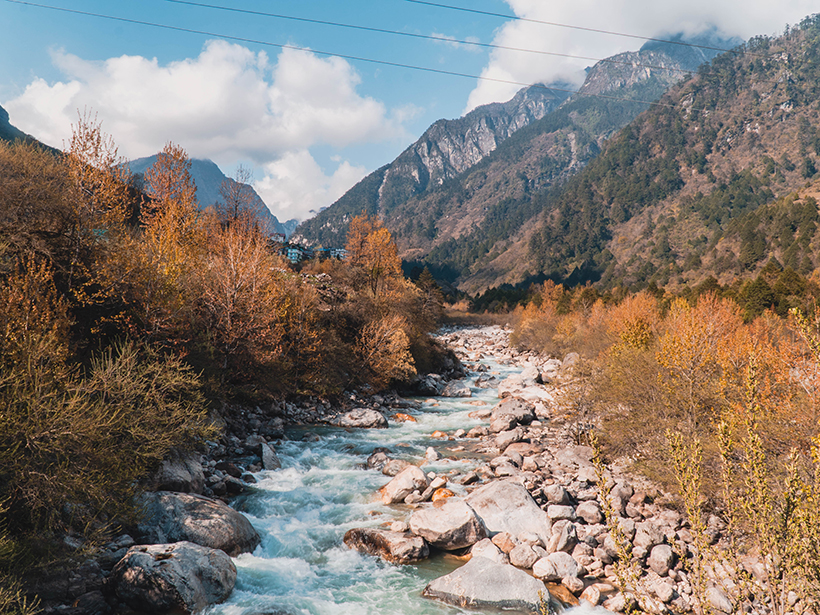Source: Water Resources Research
Below a river, or any stream, lies a layer of sediment known as the hyporheic zone. There stream water carrying nutrients, pollutants, and other dissolved substances soaks into the streambed and mixes with groundwater. Meanwhile, water in the pores of the hyporheic zone, along with any materials dissolved in it, can rise to join the stream’s flow.
This exchange of dissolved materials across a streambed helps to shape the stream ecosystem, including life in the hyporheic zone itself, as well as downstream ecosystems. In a new study, Roche et al. probe how turbulent streamflow influences this exchange process in streams with coarse, gravel-like beds.
Previous research has shown that turbulent flow of stream water enhances transport across a streambed, but the details of this process have remained unclear because of the difficulty of capturing it in action. For the new study, the researchers addressed this challenge by constructing artificial streams with tightly controlled water flow and sensors built into the streambeds.
The artificial streambeds consisted of coarse spherical beads roughly 4 centimeters in diameter, similar in size to gravel or cobbles. In the first of two series of experiments, the research team used endoscopic particle image velocimetry to visualize the flow of water in the pores between the beads. In this technique, a camera captured the flow patterns of numerous 14-micrometer-diameter glass spheres suspended in the pore water, which were illuminated by a laser.
In the second series of experiments, the scientists installed tiny salt concentration sensors over a full cross section of the 4-centimeter beads. The sensor-equipped beads were all located at the same longitudinal location in the laboratory streambed but at varying depths. Salt tracer was injected into an upstream pore, and the sensors captured its downstream transport and vertical mixing over time.
The researchers conducted both series of experiments under a range of flow conditions. The analysis revealed that patterns of concentration fluctuations closely matched patterns of turbulent velocity fluctuations in the hyporheic zone. Mixing between the salt water and freshwater was strongest in regions where turbulent eddies penetrated into the streambed.
These findings show that turbulent flow of stream water strongly links the water column to the hyporheic zone, supporting theoretical arguments that hyporheic exchange models must include turbulent surface-subsurface interactions in order to accurately simulate the transport of nutrients and pollutants in streams and rivers. Additional research into a wider range of streamflows and streambed geometries could provide further insight. (Water Resources Research, https://doi.org/10.1029/2017WR021992, 2018)
—Sarah Stanley, Freelance Writer
Citation:
Stanley, S. (2018), A closer look at turbulent transport in gravel streambeds, Eos, 99, https://doi.org/10.1029/2018EO099833. Published on 15 June 2018.
Text © 2018. The authors. CC BY-NC-ND 3.0
Except where otherwise noted, images are subject to copyright. Any reuse without express permission from the copyright owner is prohibited.

